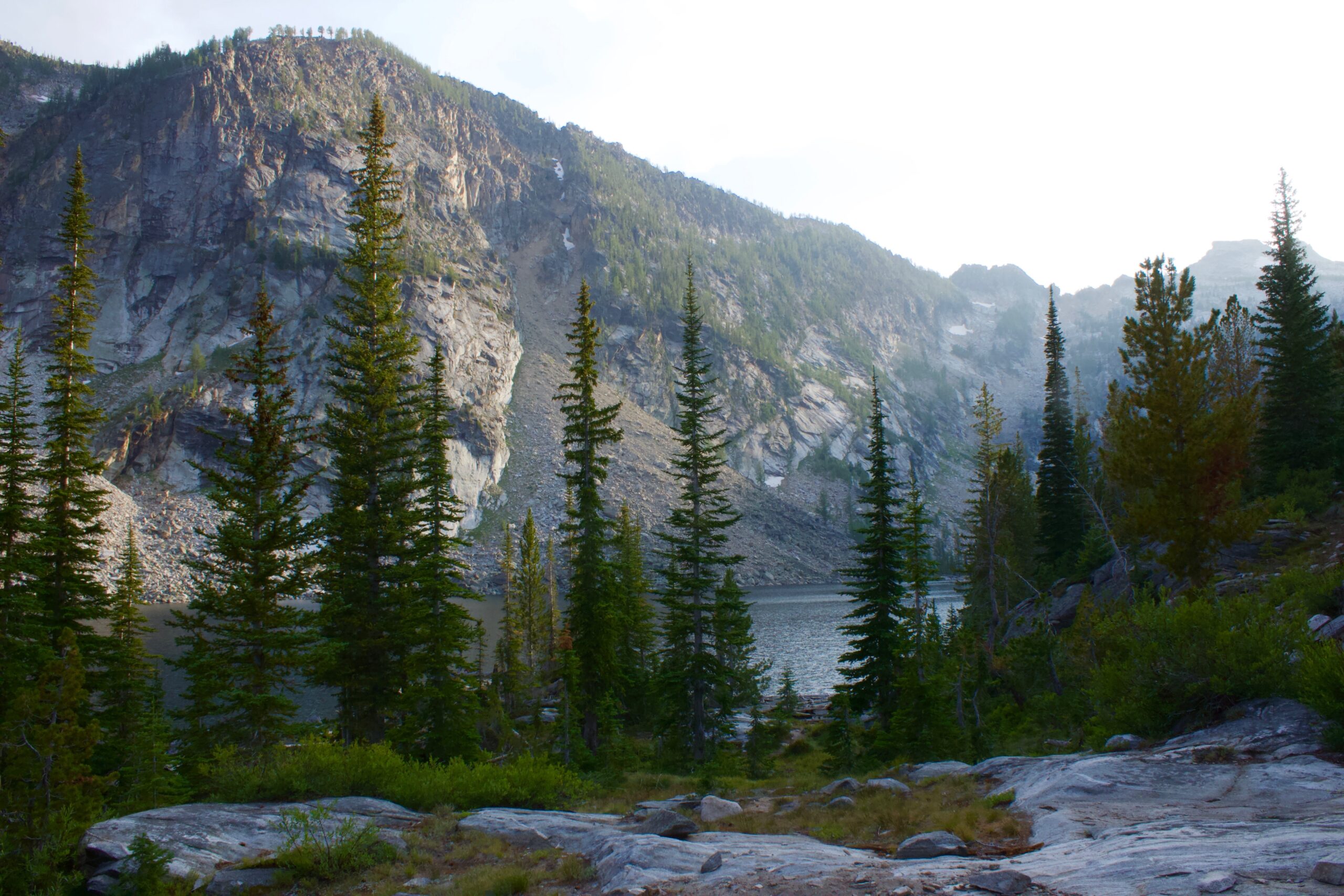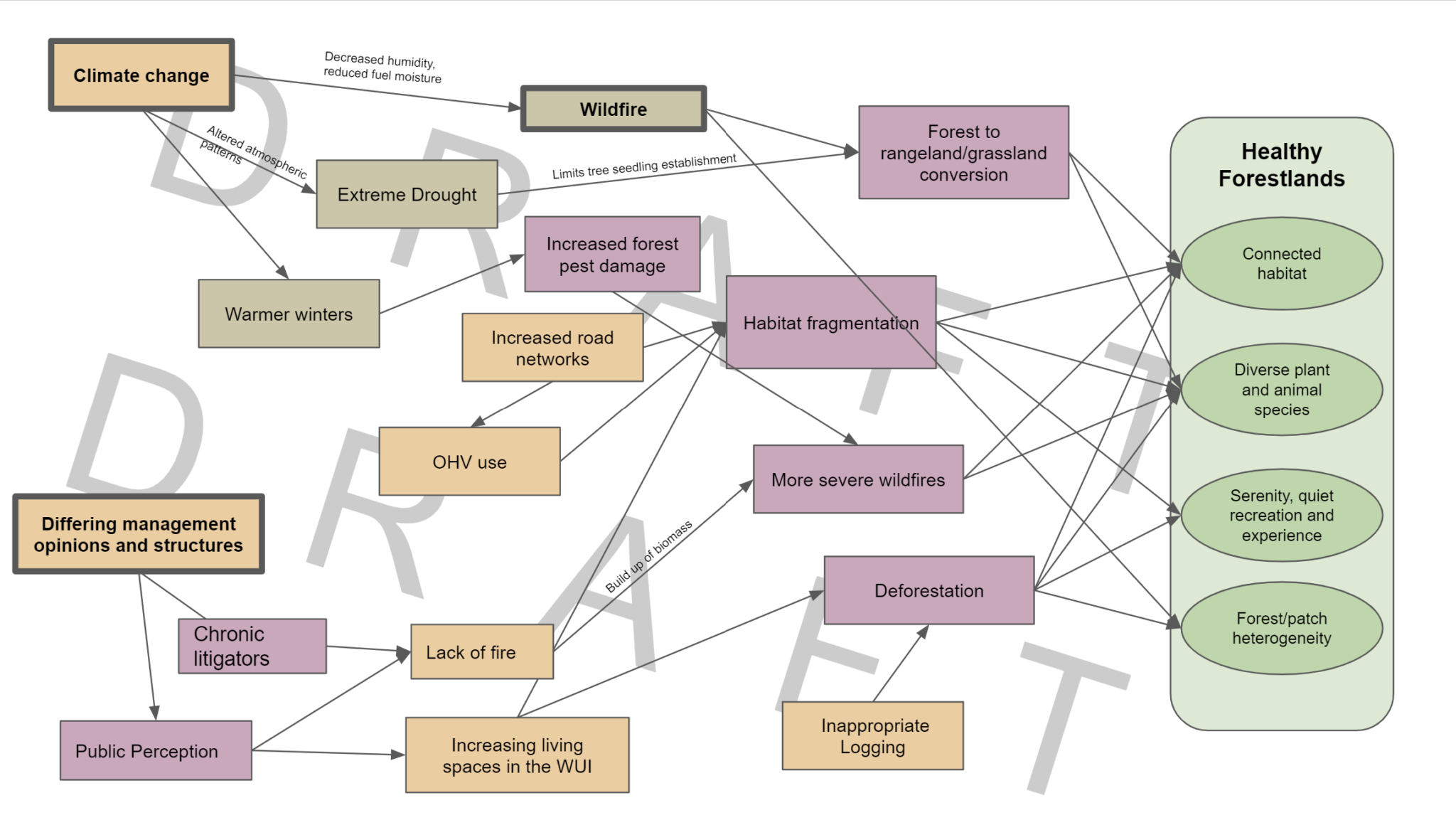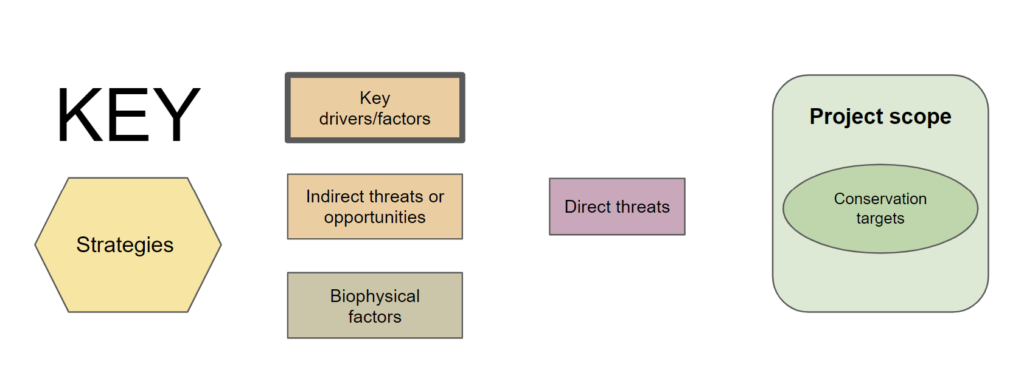Healthy Forestlands

A healthy forest is heterogeneous, containing patches of old growth and successional plants. A healthy forest also has opportunities for quiet and remote recreation experiences and serves as a connected habitat for the diversity of plant and animal species that consider it home. Currently, habitat fragmentation, wildfire, pests and disease, and deforestation threaten the health of forests in the High Divide. Only with appropriate, creative management strategies can these areas be protected for generations to come.
Biophysical and climate change-related threats are common in these ecosystems. Drought is limiting tree seedling establishment and resulting in forest to rangeland and grassland conversion. Pest prevalence is higher following warmer winters, in turn killing trees and contributing to wildfire severity that often wipes out large sections of forest, shifting tree species compositions. Meanwhile, road development and inappropriate logging practices throughout many of these forests is fragmenting wildlife habitat and the newfound accessibility is allowing for unregulated motorized use.
Differing management structures and opinions, ranging from multiple-use mandates of land management agencies to litigious groups, make management of forestland more difficult and often lead to approaches such as fire suppression and clear cutting. More effective education, collaboration, and communication between disparate groups is a likely strategy to support better management practices. Additionally, forests will be healthier if leaders and decision makers understand the interconnected relationships between soil, water, plants, wildlife, and people, and use this knowledge to inform their management methods.
Recent F&F updates:
The Forest and Fire Subcommittee has been discussing approaches to both healthy forests and wildfire management in the region. Within these discussions, two tree species were identified by the group as species of interest. These two species are whitebark pine (Pinus albicaulis) and quaking aspen (Populus tremuloides) and are sub-categories within the Diverse plant and animal species conservation target.
The group has also been defining wildfire management and has settled on a working description of the feature: wildfire management is essential to protect the future of valuable resources in the High Divide. Wildfire management extends beyond the scope of forested areas, it includes working within grassland, rangeland, and communities. The High Divide Collaborative has developed conservation targets that support living among fire-dependent ecosystems. Fire is an important ecological factor in our forests and grasslands. Resilient landscapes include resilient communities where people accept fire as its important ecological role while understanding management techniques to be able to live safely within these important ecosystems.
The group has paused their meetings for now so that the TT can work on pulling data together and working through the next steps of the LCD. Draft maps for this feature are expected to be completed by the end of 2023.
Terminology:
Healthy Forestland
Connected Habitat: Forested ecosystems that are not fragmented by roads and development.
Diversity of Plant and Animal Species: The ability to provide biodiversity and critical essential habitat for a diversity of plant and animal species including threatened, endangered, and keystone species.
Forest/patch heterogeneity: The diversity of tree species and age classes that support a diversity of plant and animal species. Important considerations for this conservation target encompass growth, both vertical and horizontal structure, composition, and maintaining ecosystem function. While future forest conditions may lie beyond the scope of natural or historical variability, they should be taken into account along with the implications of projected climate change.
Forest Resilience: Resilience to disturbance from fire, insects, diseases, and impacts of climate change. Resilience refers to the landscape’s capacity to adapt, recover, and persist in the face of disturbance, stresses, and changes overtime.
Serenity, quiet recreation, and experience: Provide sustainable ecosystem services including clean air and water, recreation opportunities, and aesthetics to communities and visitors.
Wildfire Management
Resilient Forests: Forests that can persist on the landscape following disturbance such as wildfire, insect, or disease outbreak.
Resilient Grasslands: Grassland systems that can cope with a wide range of impacts and stresses including impacts from a changing climate.
Accurate public perceptions of fire: Land managers and communities have access to science-based information about fire-dependent ecosystems, including their natural functions, and the pivotal role residents play in facilitating natural processes.
Safe human health and property: Communities are resilient to the potential wildfire risk including personnel, structures, and public resources. Communities are equipped for wildfire preparation. Preparation includes fuel treatment, prescribed burning, and outreach/education. A resilient landscape has increased defensible space and a community that anticipates possibilities of natural disturbances occurring.
Photo: Emma Smith | Unsplash
Draft Conceptual Model

